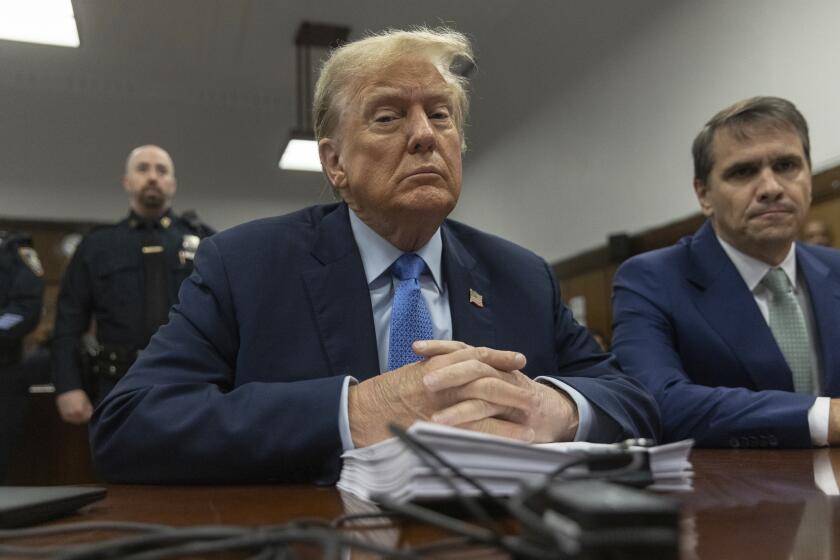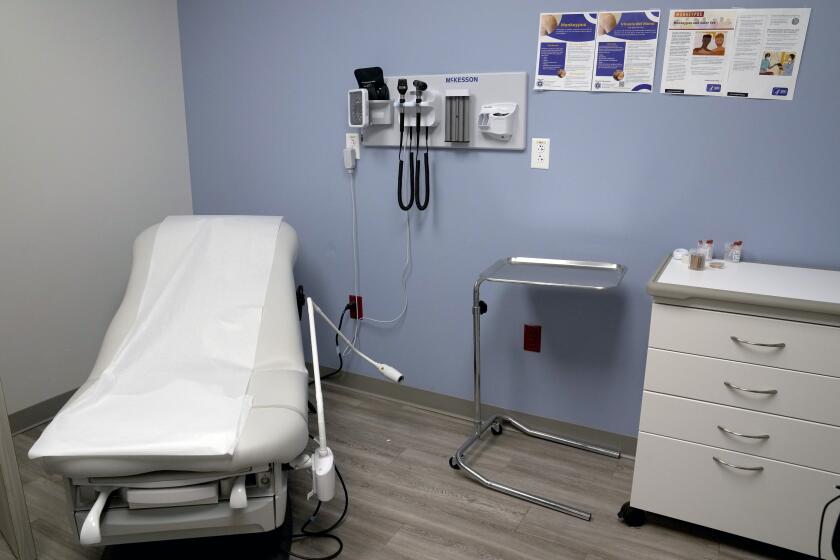Where Independent Pollsters and Politicians Diverge
In the last week of May and the early part of this month, three independent national polling organizations reported that President Bush trailed Democratic challenger John F. Kerry by anywhere from 5 to 8 percentage points.
The findings by Gallup, the Los Angeles Times and CBS News seemed to buttress each other. But embedded in the surveys was another string of figures that were less publicized and less uniform. The share of Democrats and Republicans surveyed did not jibe from poll to poll.
Gallup found Democrats and Republicans in almost equal numbers when it asked voters to identify their party alliance. CBS reported an 8-point advantage for Democrats. And The Times poll found a 13-point gap, with 38% of respondents calling themselves Democrats, compared to 25% who said they were Republicans.
The relative paucity of Republicans in The Times poll unleashed a flurry of complaints from GOP activists -- led by Matthew Dowd, chief strategist for Bush’s reelection campaign, and David Winston, a prominent GOP pollster.
Dowd put out a statement calling the poll “a mess.” Winston wrote a column for the Capitol Hill newspaper Roll Call that said the poll was flawed.
In response, Times Poll Director Susan Pinkus said the newspaper’s surveys, as with many others, had found party affiliation a notoriously fluid characteristic among respondents. She also noted the similarity among the three surveys in the Bush-Kerry matchup (The Times poll had the Massachusetts senator leading the president, 51% to 44%).
At its root, the dispute over The Times poll exemplifies differences between how independent polling organizations and politicians view survey results and party preferences.
Independent pollsters think many voters have relatively unsettled political party allegiances. When asked to name the party they favor, they might be swayed by recent news events or even by questions asked earlier in a survey, the pollsters say.
Political operatives, in contrast, tend to believe that party identification is more static. They say they can predict at any given time, with some precision, the party breakdown among the nation’s voters.
News pollsters’ views on party affiliation are reflected in their questions. CBS asks respondents if, “generally speaking,” they view themselves as Republicans, Democrats or something else. The Times asks registered voters: “Regardless of your party registration or how you have voted in the past, do you usually think of yourself as a Democrat, a Republican, or an independent, or something else?”
The question is designed to elicit a voter’s mind-set, as some states do not require registration by party, Pinkus said.
The party affiliation question has produced varied results in 10 Times surveys over the last 33 months. Democrats measured at a high of 38% in September 2001 and in this month’s poll, and a low of 28% in February 2003. During the same period, The Times measured Republicans at 25% to 28% of respondents.
Dowd and Winston say the party profile of the electorate has been remarkably stable in recent times. In the last three presidential elections, they noted, exit polls of voters found that 35% identified themselves as Republicans, while 38% or 39% called themselves Democrats. (The rest were independents or did not state a party preference.)
Winston said that professional pollsters should either strive to match those percentages of voters in their pool of respondents or statistically “weight” the results to recognize that partisan composition.
If applied to the recent Times poll, that would have meant adjusting Bush’s support upward to reflect a predicted 35% Republican turnout.
But the major organizations that conduct presidential polls typically don’t make adjustments for party membership. They think the figure is too volatile.
Andrew Kohut of the Pew Research Center for the People and the Press said that he once conducted a survey asking voters their party twice, four days apart, and that he found substantial differences in the responses.
Pinkus noted that The Times poll was based on responses from registered voters, which is a different group than those who actually cast ballots on election day.
For these reasons, polling directors for independent surveys rarely, if ever, use statistical manipulation to adjust results to achieve partisan balance. Particularly months before an election -- when many voters are not focused on politics -- they don’t have a reliable figure to adjust to, said polling administrators at Gallup, CBS, ABC, the Pew Center and the Los Angeles Times.
The polling organizations do adjust their figures for race, income level, gender and other variables. Those demographic figures are more static, according to officials at the four polling organizations.
“A news poll at this stage of the race is not intended to be predictive of the future,” said Gary Langer, director of polling for ABC News. “In a poll today, news pollsters are not trying to find out where people will be on Nov. 2. They are trying to find out where people are today.”
Langer said partisan political pollsters, in contrast, were more interested in “where the public will be at election time.”
An ABC News poll released Monday showed Kerry leading a two-way race with Bush, 53% to 45%, with the senator holding a 4-percentage point lead when independent Ralph Nader was thrown into the mix. Those findings came a few days after a Pew poll showed Bush leading Kerry by 2 percentage points in a two-way race.
Kerry’s campaign called the Republicans’ complaints about The Times poll sour grapes.
More to Read
Get the L.A. Times Politics newsletter
Deeply reported insights into legislation, politics and policy from Sacramento, Washington and beyond. In your inbox three times per week.
You may occasionally receive promotional content from the Los Angeles Times.






